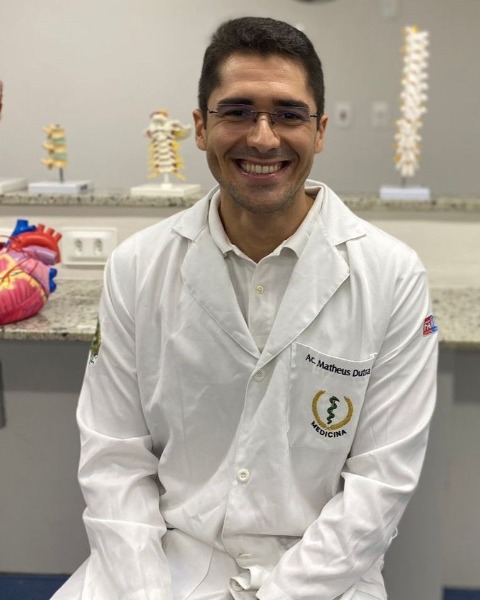Lower Limb Case & Anatomical Studies Posters
Poster: Lower Limb Case & Anatomical Studies Posters
77 - DUPLICATE GREAT SAPHENA VEIN: CASE STUDY
Sunday, March 24, 2024
5:00pm - 7:00pm US EDT
Location: Sheraton Hall
Poster Board Number: 77
There are separate poster presentation times for odd and even posters.
Odd poster #s – first hour
Even poster #s – second hour
Co-authors:
There are separate poster presentation times for odd and even posters.
Odd poster #s – first hour
Even poster #s – second hour
Co-authors:
Isabela Campelo - UNL; Kaísa Figueiredo - UNL; Alisson Sá - UNL; Lais Alfaia - UNL; Gabrielle Barbosa - UNL; Cláudio Bezerra - UNL; Menderson Cavalcante - UNL; Kaynanda da Silva - UNL; Efrain de Andrade - UNL; Jefferson de Freitas - UNL; José de sousa filho - UNL; Dara de Souza - UNL; Clara Gonçalves - UNL; César Grieger - UNL; Kymberlly Pimenta - Universidade do Estado do Amazonas; Herdeson Queiroz - UNL; Ana Luiza Ramos - UNL; Maria Alessamia Lima - UNL; Arlete Ferreira - UNL; Carlos Eduardo de Carvalho - Universidade do Estado do Amazonas; Edinaldo Junior - Universidade do Estado do Amazonas; Aline Maria Amorim - UNL; Carla Calheiros - UNL; Bruna Karen Lopes - UNL; Ricardo Machado Filho - UNL; Najma Mendes - UNL; Edivânia Pinheiro - UNL; Ewellin Rabello - UNL; Enzo Santos - UNL; Valdete Valdete Santos de Araújo - UNL

Matheus Dutra
Student
FAMETRO
Manaus, Amazonas, Brazil
Presenting Author(s)
Abstract Body :The lower limb has venous drainage carried out by superficial, perforating and deep veins, with the veins of the lower limbs being more related to venous diseases than the veins of the upper limbs. In superficial venous drainage, the great saphenous and small saphenous veins are the main veins of the lower limb. The great saphenous vein( GSV) originates from the union of the dorsal venous arch of the foot with the dorsal digital vein on the medial side of the hallux. During its course in the leg and thigh, the great saphenous vein receives several tributaries, also anastomosing with the small saphenous vein. However, knowledge about their duplications is still scarce, and there is therefore not much evidence about them.Thus, the present case study describes an anatomical variation of the great saphenous vein in the leg segment, such as a unilateral duplication observed in part of its extension, a fact analyzed during the dissection of the anatomical specimen in the Human Anatomy laboratory of the State University from the Amazon.The duplication of this great saphenous vein is true when there are two great saphenous veins in the saphenous compartment, which is formed by the union of the saphenous fascia and the muscular fascia. Therefore, a true duplication is present when two great saphenous veins run parallel in the same saphenous compartment. This makes it easier for this phenomenon not to be confused with an accessory saphenous vein or with tributaries of the great saphenous vein. Oğuzkurt (2012) also reports that duplication of the great saphenous vein is observed in only 1% of the population, and this finding in the anatomical specimen is extremely rare.Albricker et al. (2018) assessed that there is an association between the anatomical variation of the GSV and the presence of venous return.Furthermore, it is worth highlighting that duplication of a great saphenous vein can be a potential cause of recurrent varicose veins after surgery or even a complication during surgery (MESHRAM et al., 2018), with anatomical understanding being essential to correctly diagnose and indicate the best forms of treatment for varicose veins (OĞUZKURT, 2012). As well as the knowledge of knowing how to identify anatomical variations, for example of the great saphenous vein, in order to increase the success and effectiveness of surgical treatments and mitigate recurrences (KURT; AKTÜRK; HEKIMOĞLU, 2014).Among these anatomical variations there is the duplication of the right great saphenous vein described in the course of this work. Therefore, the anatomical study of the path and possible morphological and structural changes of this vein, the longest superficial vein in the human body, is essential for a better understanding of the human body.

